The 10 Most Common Florida Weeds
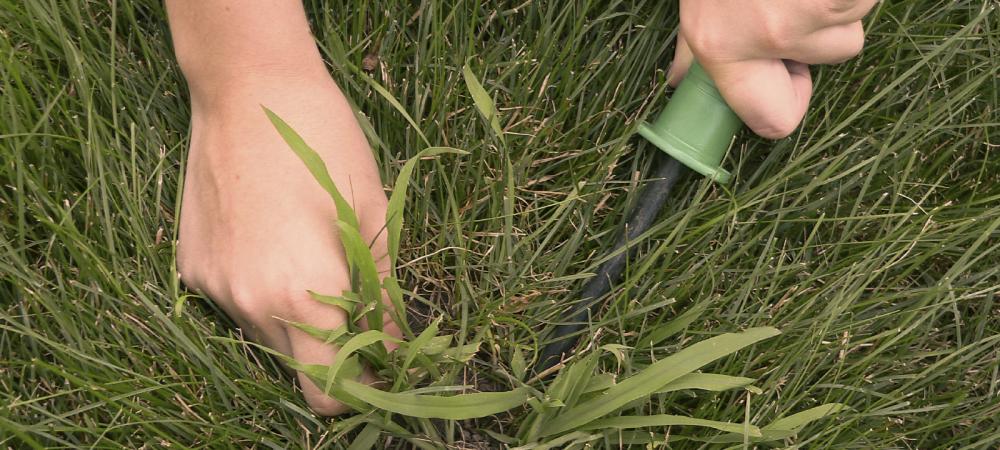
If you live in the Tampa Bay area, you know how quickly weeds can turn a beautiful lawn into a patchy mess. Florida’s warm, humid climate means weeds can thrive nearly all year long. Spotting weeds early—and knowing exactly what you’re dealing with—is the first step to keeping your yard healthy and green. Here are the 10 most common lawn weeds you’ll find in Florida, with easy-to-follow descriptions so you can recognize them on sight.
1. Crabgrass (Digitaria spp.)
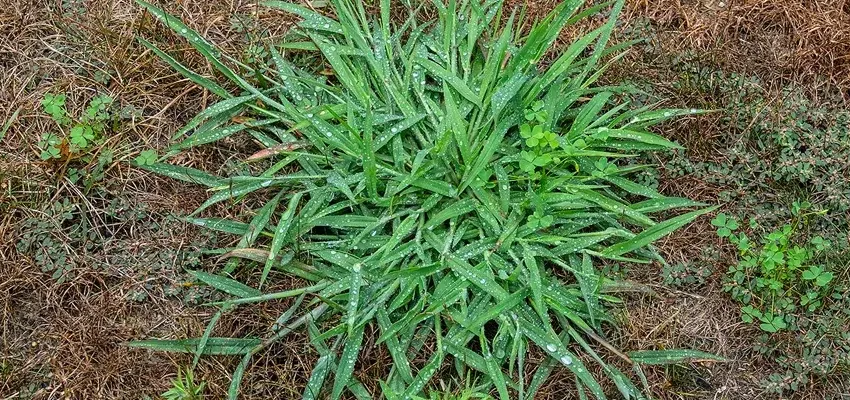
Crabgrass is one of the most common and frustrating weeds in Florida. It’s easy to recognize by its light green color and wide blades that spread out low to the ground like crab legs.
- Appearance: Light green, sprawling grass-like weed with wide blades.
- Growth Season: Thrives in the summer heat (late spring through fall).
- Height: Up to 12 inches tall but usually spreads outwards.
- Flowers: Produces thin, finger-like seed heads.
- Where You’ll See It: Bare spots or thin turf.
- How to Control It: Use a pre-emergent herbicide in early spring and post-emergent if already present. Thick, healthy grass will also crowd it out.
2. Dollarweed (Hydrocotyle spp.)
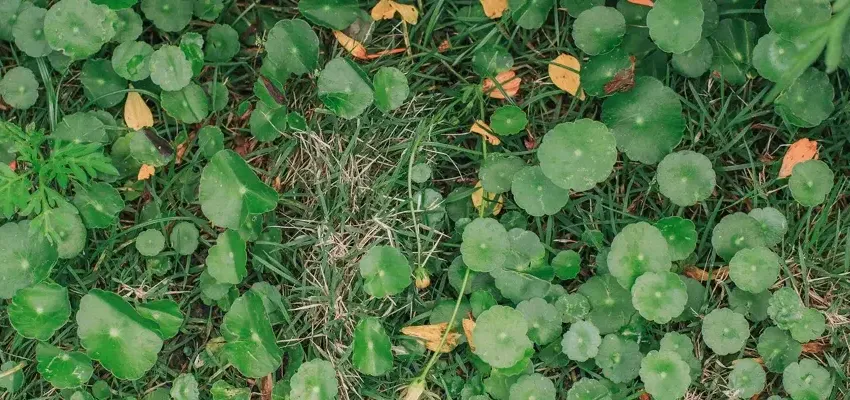
Dollarweed is instantly recognizable by its shiny, round, coin-shaped leaves that pop up in moist areas. It spreads fast in damp lawns and is often mistaken for a lily pad on land.
- Appearance: Bright green, round leaves with scalloped edges.
- Growth Season: Appears in warm, wet months.
- Height: Grows low, about 1-3 inches tall.
- Flowers: Tiny, white, sometimes hard to notice.
- Where You’ll See It: Overwatered areas or spots with poor drainage.
- How to Control It: Cut back on watering, improve drainage, and use a selective herbicide.
3. Spurge (Euphorbia spp.)
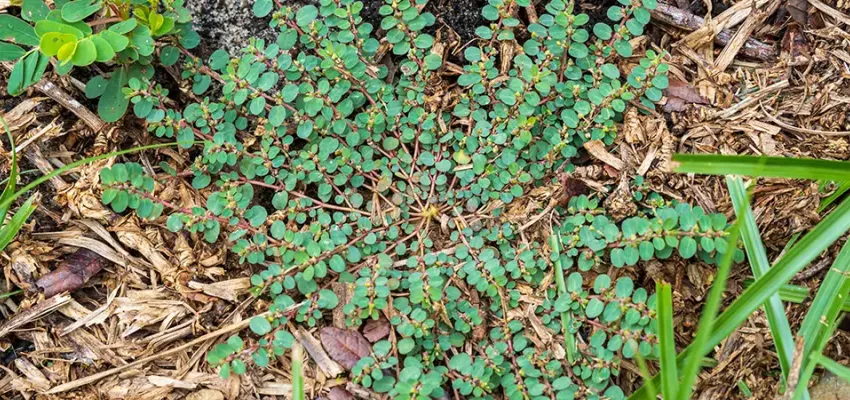
Spurge is a fast-spreading, low-lying weed that forms dense mats. Its reddish stems and tiny leaves make it stand out, and it’s often found creeping through cracks and thin lawns.
- Appearance: Reddish stems, small green oval leaves, white sap when broken.
- Growth Season: Summer annual, from late spring.
- Height: Flat, mat-forming growth habit.
- Flowers: Tiny pink or white flowers.
- Where You’ll See It: Thin lawns, cracks, driveways.
- How to Control It: Pull by hand or treat with post-emergent herbicides; pre-emergents in spring help prevent it.
4. Chamberbitter (Phyllanthus urinaria)
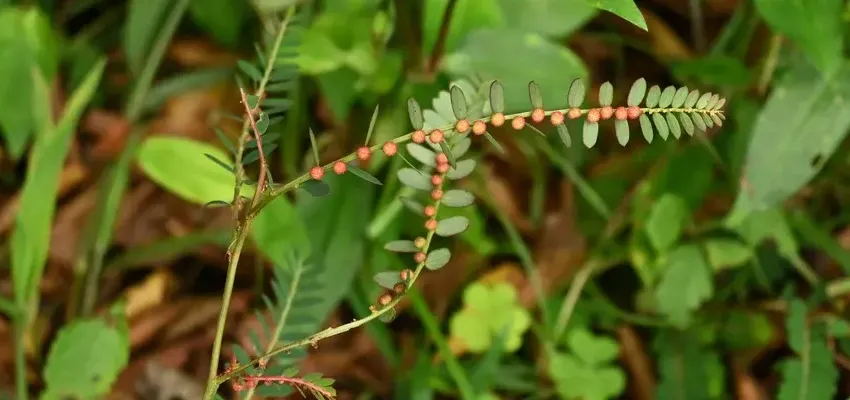
Chamberbitter looks like a mini-mimosa tree, with rows of tiny leaflets along its stems. Flip a leaf over, and you’ll see tiny green seed balls hiding underneath—a telltale sign.
- Appearance: Small, fern-like leaves with seed balls underneath.
- Growth Season: Late spring and through the summer.
- Height: 6-18 inches tall.
- Flowers: Very small, yellow-green, easy to miss.
- Where You’ll See It: Thin lawns, flower beds, neglected areas.
- How to Control It: Pre- and post-emergent herbicides, and consistent mowing.
5. Nutsedge (Cyperus spp.)
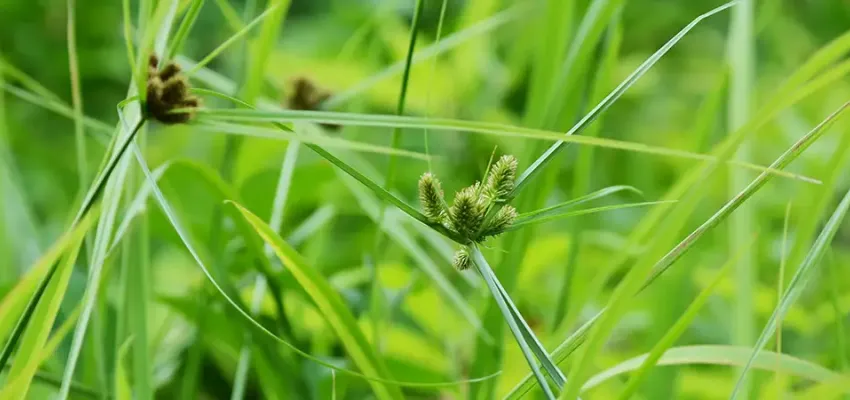
Nutsedge stands out with its bright, shiny green leaves and triangular stems, growing taller than your grass and faster too. If you notice weeds shooting up after a rain, it’s probably nutsedge.
- Appearance: Upright, grass-like with a triangular stem.
- Growth Season: Loves the rainy season, May to September.
- Height: 12-24 inches tall.
- Flowers: Yellow or purple spiky seed heads.
- Where You’ll See It: Wet areas, after rain.
- How to Control It: Needs specialty nutsedge herbicide; standard weed killers won’t work.
6. Virginia Buttonweed (Diodia virginiana)
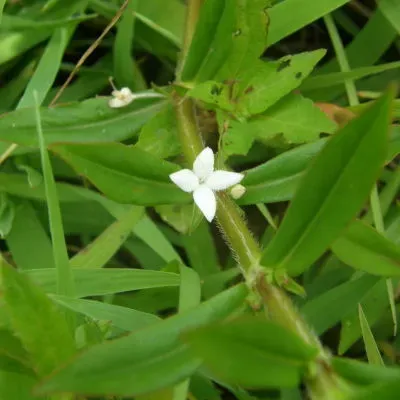
Virginia Buttonweed forms tough, low mats with narrow, hairy leaves. Look for the distinctive small white, star-shaped flowers as it weaves through your turf.
- Appearance: Low-growing, hairy stems, narrow leaves.
- Growth Season: Summer weed, can persist year-round.
- Height: Low to the ground but spreads wide.
- Flowers: Tiny white flowers with four petals.
- Where You’ll See It: Moist, poorly drained spots.
- How to Control It: Repeated treatments with selective herbicides and proper drainage are key.
7. Florida Pusley (Richardia scabra)
Florida Pusley forms hairy, spreading mats with bright white flowers. It’s one of the easier weeds to spot thanks to its constant flowering in the summer heat.
- Appearance: Sprawling weed with hairy stems and oval leaves.
- Growth Season: Summer annual, loves heat.
- Height: 4-8 inches tall.
- Flowers: Clusters of small, bright white flowers.
- Where You’ll See It: Patchy, stressed lawns.
- How to Control It: Post-emergent herbicides and promoting thick turf with fertilization.
8. Clover (Trifolium spp.)
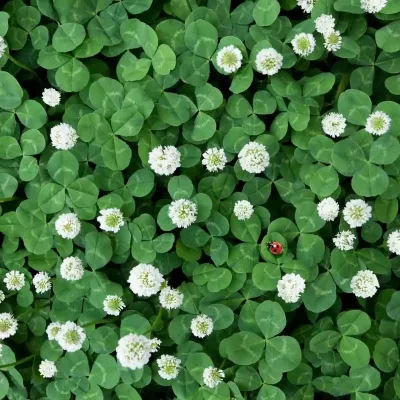
Clover is easy to recognize with its classic three-leaf clusters, often with a white “V” mark, and its distinctive puffy white flowers that bees love.
- Appearance: Three rounded leaves with V-shaped marks.
- Growth Season: Cool-season weed, grows in winter and spring.
- Height: 3-6 inches tall.
- Flowers: Puffy white flower heads.
- Where You’ll See It: Underfed lawns or compacted areas.
- How to Control It: Proper lawn nutrition and broadleaf herbicides will keep clover at bay.
9. Dandelion (Taraxacum officinale)
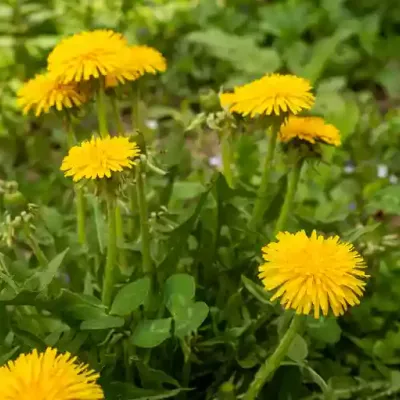
You know it when you see it—those bright yellow flowers that turn into fluffy white seed heads. Dandelions grow in a low rosette of jagged leaves and spread quickly if left alone.
- Appearance: Jagged, lance-shaped leaves in a circular rosette.
- Growth Season: Cooler months but can show up anytime.
- Height: 4-10 inches.
- Flowers: Bright yellow turning into white puffballs.
- Where You’ll See It: Thin, stressed grass or compacted soil.
- How to Control It: Spot treat with broadleaf herbicide and pull roots completely.
10. Goosegrass (Eleusine indica)
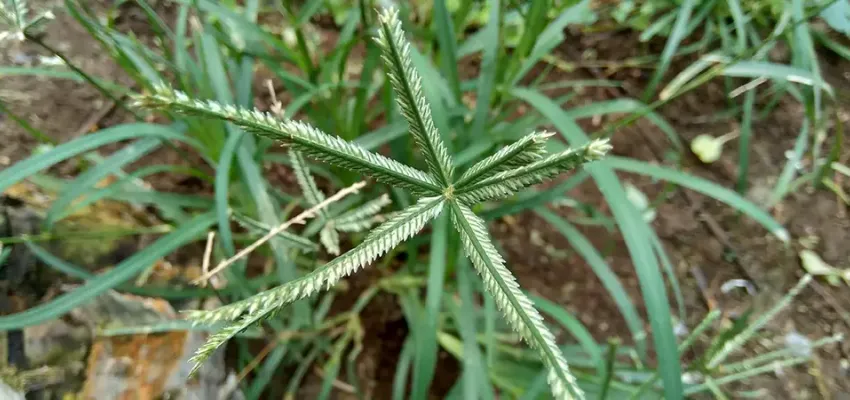
Goosegrass forms flat, silverish clumps that can quickly take over bare areas. The seed heads look like little wagon wheels, making them easy to identify.
- Appearance: Clumping grass with flattened stems and silvery bases.
- Growth Season: Summer annual, appears late spring through summer.
- Height: Up to 18 inches tall.
- Flowers: Flattened, finger-like seed heads.
- Where You’ll See It: Compacted, high-traffic areas.
- How to Control It: Pre-emergents in late spring, post-emergents for active growth, and aeration to reduce compaction.
Take Back Your Lawn with AssureGreen’s Expert Weed Control
If these weeds are taking over your Tampa Bay lawn, you don’t have to fight them alone. We offer comprehensive, professional-grade weed control that tackles these aggressive Florida weeds at the root.
Our service includes:
- Pre-emergent treatments to stop weeds before they start.
- Targeted post-emergent applications to eliminate active weeds.
- Custom fertilization programs to strengthen your grass and naturally choke out weeds.
- Ongoing care plans that change with Tampa Bay’s seasons to keep your yard looking its best.
Our experienced technicians know Florida weeds inside and out, so you can enjoy a healthier, greener, and more beautiful lawn all year long.
Don’t let weeds win—get professional help from AssureGreen today. Contact our team today!
